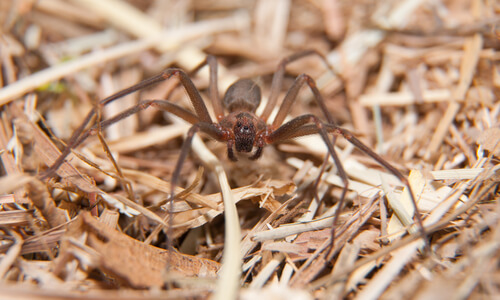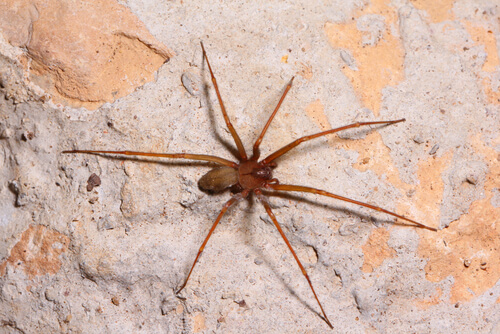Watch Out for the Chilean Recluse Spider

Also known as the “corner” spider , it is a species that tends to hide in places difficult to access, like cracks or behind furniture. The Chilean recluse spider is considered one of the most dangerous spiders, and is the most poisonous within its genus. Its bites can cause severe reactions and even cause death.
The Chilean recluse spider: habitat and characteristics
Its scientific name is Loxosceles Laeta, and it is native to South America. The spider lives mainly in Chile, Peru, Ecuador, Brazil, Argentina and Uruguay. It is also possible to see it in other places, such as the southern United States and Mexico.
It measures between 8 and 30 millimeters with its legs extended, and is coarse in texture. Females are larger than males, and unlike other spiders, this species ‘ only ‘ has six eyes. A large frontal pair and two small lateral pairs give it 300° vision.

Behavior and bite of the Chilean recluse spider
Mostly nocturnal, this spider usually comes out on hot summer nights. Although active all year, it decreases activity when it’s cold. It prefers dark, dusty and untidy places, and only leaves them to hunt.
We can detect its presence if we find exoskeletons, since this spider molts its skin three times before reaching adult size. We must also pay attention to its web: it has an irregular design, a “cottony” appearance, and is straight.
This spider gets frightened easily, and runs away as soon as it senses danger, reaching speeds of 15 km/h. Another way it defends itself against predators or attacks is by injecting poison. The poison is 15 times more toxic than a cobra’s, and 10 times more potent than a sulfuric acid burn.

Treatment and solutions
Prevention against the Chilean recluse spider
Rigorous cleaning is the best way to prevent this spider from making its home in your house. This is especially true in areas that we don’t clean often. Consider: behind the tables, beds with drawers, behind heavy and large furniture, upper corners of the house, wall vines , stacks of firewood, piles of objects, etc. When cleaning these areas, always wear gloves and use a powerful vacuum cleaner.
This text is provided for informational purposes only and does not replace consultation with a professional. If in doubt, consult your specialist.